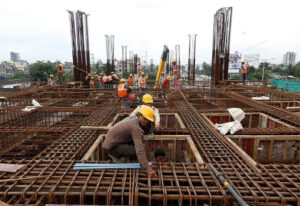The MTR Story – Mahavalli Tiffin Rooms
3 min read
MTR was set up near Lalbagh Fort in Bangalore by two brothers, Yajnanarayana Maiya and Ganappayya Maiya who came down from a place called Parampalli, near Udupi. In 1936 Ganappayya Maiya decided to go back to Parampalli. Yajnanarayana Maiya now assumed full charge of the restaurant. It was originally called ‘Brahmin’s Coffee House’, but the name was changed when it was shifted to a bigger premise in 1960.
MTR during the Emergency – Pivoting at the right time
In 1976, when the Emergency was declared, the government called five of the most well-known restaurants in the city – including MTR – and told them that they had to reduce the prices of the food at their restaurants according to government-approved rates, to bring it within the reach of the common man. The prices of the items were to be the same in all the restaurants. Some restaurants paid up; others started compromising on the quality. MTR did neither. MTR kept the quality of the food as high as ever and put up a board stating the losses for the day outside the restaurant. MTR continued in this way for 16 days. On the 16th day, it closed down. During this time, MTR opened a small departmental store next to the hotel and started making and selling mixes for Rava Idli and other items. The restaurant opened again once the Emergency was lifted.
“Integrity is the backbone of MTR. It’s the core reason for its survival over the decades. Whether it’s food or conduct in business, the emphasis is on ethics and fair play”
- Managing the Funding and Acquisition Game Strong!
In the endeavor to grow, MTR required private equity funding in 2000 and 2003. The business grew, and the investors could exit. In 2007, Norwegian conglomerate Orkla bought MTR for $100 million in one of the most talked-about acquisitions of the time.
- Communication is of Paramount Importance
MTR invested in advertising on a large scale, and the packaging was entirely redesigned. Post-acquisition, in 2008, about 3–4 percent of their expenses went into advertising. When Sanjay took charge in 2009, his task was to transform the way the company functioned, and in 2011, 14–16 percent of the company’s expenses into advertising. When MTR began service in 1924, its aim was to give people a taste of Karnataka’s cuisine. The very purpose of the business has always been to bring authentic Indian food to the consumers and continue the relevance of the cuisine. But for that purpose, MTR had to change with the times. They needed additional capacity, so Rs 250 crore was invested in manufacturing units. Food safety standards were also thus improved — something most Indian companies overlook.
- Hitting the Indian Quotient with Flavours!
A lot of India’s food businesses have been built around Western and Chinese cuisines. In fact, only pasta and noodles are talked about in the packaged food space. In the breakfast space, it is oats, Kellogg’s, etc. But MTR provides Indian breakfast options with Idli, Rava Idli, upma, and poha, among others. While North Indian snacks are celebrated by Haldirams, few brands deliver on the South Indian snacking culture. MTR thrives on that — with categories ranging from banana chips to cornflakes mixture.



